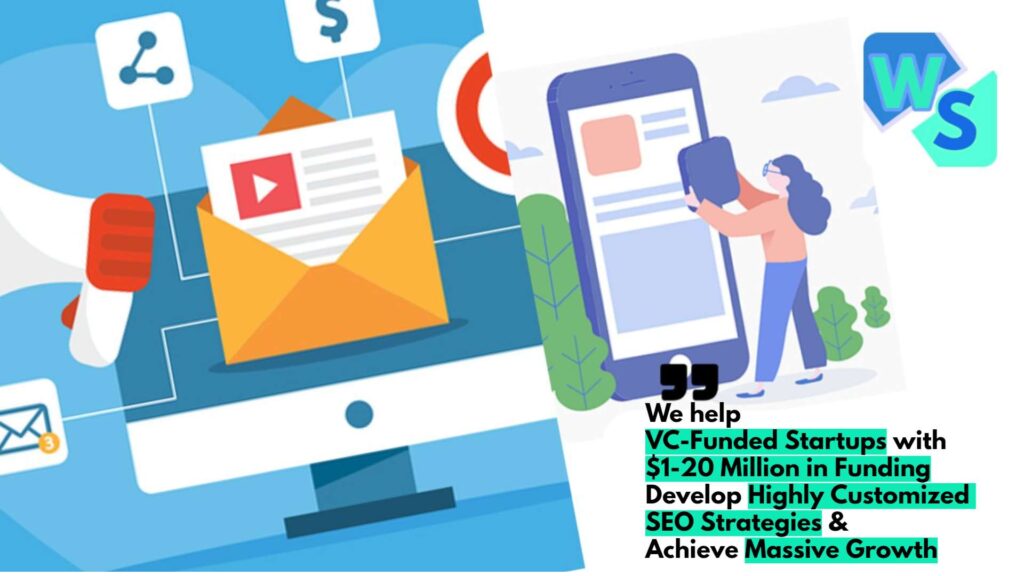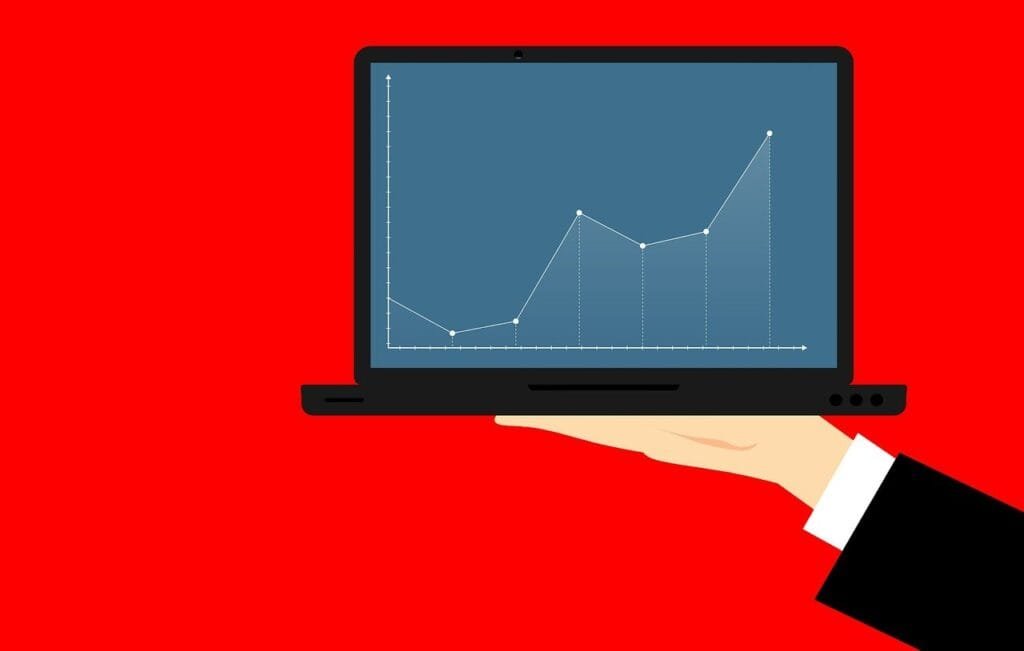Understanding SaaS Pricing Strategies
Creating effective pricing strategies is crucial for companies in the Software as a Service (SaaS) sector. Understanding different pricing models can help organizations target their market effectively and improve their overall marketing strategies.
Subscription-Based Pricing
Subscription-based pricing is a prevalent model in the SaaS industry. This strategy is particularly suited for services that users regularly utilize, as it facilitates agile product management and continuous optimization to drive financial growth. By charging users on a monthly or annual basis, companies can predict revenue more accurately and maintain consistent cash flow.
The table below illustrates typical subscription pricing tiers that companies may offer:
| Tier | Features | Monthly Price |
|---|---|---|
| Basic | Limited features, email support | $10 |
| Standard | Core features, email support, and live chat | $25 |
| Premium | All features, priority support | $50 |
This tiered structure allows customers to select the option that best suits their needs while providing upgrade pathways as their requirements evolve.
Competitor-Based Pricing
Competitor-based pricing involves setting prices based on the prices charged by rivals in the market. This approach can be particularly advantageous for new entrants in markets where there’s insufficient product usage data to inform their pricing strategies. By analyzing competitors, a company can position itself more effectively in the market and attract customers who may be comparing options.
The following table provides an example of how competitor pricing comparisons can guide strategic decisions:
| Competitor | Monthly Price | Key Features |
|---|---|---|
| Competitor A | $15 | Standard features, basic support |
| Competitor B | $30 | Advanced features, 24/7 support |
| Competitor C | $25 | Custom integrations, dedicated support |
Utilizing competitor insights helps companies identify gaps in their offerings and adjust their pricing strategies accordingly.
Understanding these basic pricing strategies allows tech startups and SaaS companies to implement effective technology marketing strategies and support their overall growth objectives. Further exploration into pricing models can lead to more informed decision-making and competitive advantages in the marketplace.
Types of SaaS Pricing Models
Choosing the right pricing model is critical for SaaS companies aiming to attract and retain clients. Two of the most popular pricing models are the free trial and freemium models, along with usage-based and seat-based pricing.
Free Trial and Freemium
The free trial SaaS pricing strategy enables potential customers to experience a service for a limited time at no cost. This approach aims to demonstrate the value of the product, reduce barriers to entry, and convert free users into paying customers. Offering a free trial can significantly increase interest in the service, with a recommended conversion rate target of 25% and above for marketing success (Crunch Marketing).
The freemium model allows users to access basic features of the product without charge, while premium features require a paid subscription. This method helps in showcasing core functionalities, helping potential clients to recognize service benefits. Demonstrating the product’s value upfront can lead to higher conversion rates, as clients experience features before committing to a purchase.
| Model Type | Key Features | Conversion Rate Goal |
|---|---|---|
| Free Trial | Limited-time access to full features | 25% and above |
| Freemium | Basic features available for free; premium features paid | Analyzed over a 12-month period |
Offering free services such as templates, tools, trials, or plans not only provides value at no cost but also establishes a helpful brand image and encourages positive word-of-mouth.
Usage-Based and Seat-Based Pricing
Usage-based pricing is another effective approach for SaaS companies, where users pay based on their actual usage of the service. This model aligns customers’ payment with their value derived from the product. For example, cloud storage services may charge based on the amount of data stored or transferred. This pricing strategy can attract a broader customer base as clients pay according to their specific needs.
On the other hand, seat-based pricing charges customers based on the number of users or seats that will access the software. This model is particularly effective for SaaS solutions focused on team collaboration or enterprise resource planning. It allows companies to scale as their workforce grows without needing to re-evaluate their pricing packages regularly.
| Model Type | Key Features | Common Industries |
|---|---|---|
| Usage-Based | Payment based on actual service usage | Cloud storage, API services |
| Seat-Based | Charges based on number of user licenses | Collaboration tools, enterprise software |
These pricing models provide flexibility for both SaaS companies and their customers. By clearly outlining costs and benefits, businesses can enhance client satisfaction and retention. For further insights into technology marketing strategies, companies can explore various approaches to effectively position their offerings in the market.
Developing Effective Pricing Strategies
In the competitive landscape of Software as a Service (SaaS), developing effective pricing strategies is essential for attracting and retaining customers. This section discusses two key approaches: buyer persona-centric pricing and utilizing customer data for pricing decisions.
Buyer Persona-Centric Pricing
Creating a pricing strategy based on buyer personas is crucial for SaaS companies. This approach involves reverse-engineering pricing to meet the needs of different customer cohorts. By understanding the specific requirements, preferences, and budget constraints of various buyer personas, companies can tailor their pricing structures accordingly.
A well-defined buyer persona will highlight:
- Pain points
- Desired features
- Price sensitivity
Utilizing buyer personas can help businesses determine whether a penetration pricing strategy, which offers lower initial prices to attract a large customer base, is appropriate (RST Software Blog). For effective implementation, companies should also consider how their pricing aligns with customer lifetime value (CLTV) compared to customer acquisition cost (CAC). Maintaining a 3:1 LTV:CAC ratio is a good target, ensuring profitability while appealing to potential clients (SKALE).
| Buyer Persona | Pain Points | Desired Features | Price Sensitivity |
|---|---|---|---|
| Small Business Owners | Cost management | Basic functionalities | High |
| Enterprise Customers | Scalability | Advanced analytics | Medium |
| Freelancers | Flexibility | Payment options | Low |
Utilizing Customer Data for Pricing
Leveraging customer data is another effective strategy for determining SaaS pricing. Organizations should analyze user behavior to identify patterns and preferences that inform pricing decisions. Gathering insights from various data sources, including customer feedback and product usage metrics, allows businesses to adjust their pricing models based on real-world usage and customer willingness to pay.
Collecting data can inform decisions about:
- Feature pricing: Offering different price tiers based on feature sets.
- Usage-based pricing: Charging based on the actual usage of the service.
- Tiered pricing: Structuring prices for different levels of service.
Customer feedback plays a vital role in refining pricing strategies as it reveals customer needs, preferences, and pain points (Insivia). Implementing a customer-centered pricing strategy can lead to increased adoption and loyalty while enhancing overall business messaging.
By focusing on buyer personas and utilizing customer data, SaaS companies can create pricing strategies that not only attract new clients but also foster lasting relationships with existing users. For additional insights on digital marketing for tech companies, explore resources that delve deeper into technology marketing strategies.
Key SaaS Marketing Metrics
Tracking the right metrics is essential for any SaaS company aiming to optimize its marketing strategies and grow its market share. Two critical metrics in this domain are the Net Promoter Score (NPS) and the brand awareness alongside the Marketing Qualified Lead (MQL) to Sales Qualified Lead (SQL) conversion rate.
Net Promoter Score (NPS)
Net Promoter Score (NPS) serves as a vital indicator of brand-customer relationships and engagement levels. It measures customer loyalty by asking a simple question: “On a scale of 0 to 10, how likely are you to recommend our service to a friend or colleague?” The responses can be categorized as promoters, passives, or detractors.
A high NPS reflects strong customer satisfaction and can signify potential referrals, which are particularly valuable for SaaS companies. Although NPS alone is often considered insufficient to capture the full picture of customer sentiment, it can provide insights into customer satisfaction and future growth prospects.
| NPS Category | Score Range | Description |
|---|---|---|
| Promoters | 9-10 | Loyal customers who would promote your brand |
| Passives | 7-8 | Satisfied but unenthusiastic customers |
| Detractors | 0-6 | Unhappy customers who can hurt your brand |
Brand Awareness and MQL to SQL Conversion
Brand awareness is an essential SaaS marketing metric that indicates how well potential customers are aware of and trust a brand. It can be measured through various means, including tracking brand mentions, social media interactions, backlinks, and content marketing initiatives. Enhancing brand awareness is crucial for attracting new customers and scaling growth (Crunch Marketing).
The MQL to SQL conversion rate is another critical metric that highlights the effectiveness of the marketing team and the alignment between marketing and sales. This rate measures how many Marketing Qualified Leads (identified based on certain criteria) convert into Sales Qualified Leads (leads deemed ready for the sales team). Optimizing this conversion is vital for streamlining lead generation processes and improving overall business growth (Crunch Marketing).
| Metric | Description | Goal |
|---|---|---|
| Brand Awareness | Measures familiarity and trust in the brand | High |
| MQL to SQL Conversion Rate | Percentage of leads moving from MQL to SQL | Above 25% |
Tracking these key metrics enables SaaS companies to refine their marketing strategies effectively. For deeper insights into effective strategies, check out technology marketing strategies and digital marketing for tech companies.
Essential SaaS Marketing Strategies
In the competitive landscape of SaaS, implementing effective marketing strategies is crucial. Two fundamental aspects include conducting competitor analysis and building a comprehensive customer journey.
Competitor Analysis and Buyer Personas
Competitor analysis is vital for SaaS startups. By examining competitors’ marketing efforts, they can identify strengths to leverage and areas for improvement in their own strategies (Codica). This practice allows them to better reach their target audience and differentiate their offerings.
| Competitor Analysis Steps | Description |
|---|---|
| Identify Competitors | Determine who the main competitors are in the market. |
| Analyze Marketing Strategies | Review their tactics, messaging, and channels used to reach customers. |
| Determine Strengths and Weaknesses | Identify successful strategies and areas needing improvement. |
| Benchmark Performance | Compare metrics such as engagement and conversion rates to gauge effectiveness. |
Understanding buyer personas is equally important. Creating detailed profiles of potential customers, including their goals, challenges, and purchasing behavior, enables companies to tailor their messaging and campaigns to resonate with their audience effectively.
Building a SaaS Customer Journey
Developing a SaaS customer journey is essential for guiding potential clients from initial awareness to a purchasing decision. This journey involves multiple touchpoints, where awareness and trust in the brand are built (Codica). Applying the AIDA principle (awareness, interest, decision, action) helps organizations structure their marketing efforts.
| Customer Journey Stages | Description |
|---|---|
| Awareness | Potential users discover the product through various channels. |
| Interest | Users seek more information, such as features and benefits. |
| Decision | Users compare options, assess pricing and support, leading to their purchasing decision. |
| Action | Users complete the purchase, ideally becoming advocates for the product. |
Recognizing the necessity of each stage, businesses can develop targeted marketing initiatives that address customer needs and foster loyalty. By emphasizing customer advocacy and retention through successful onboarding and support strategies, companies can enhance their customer journey and maximize growth.
For additional insights into effective strategies, including B2B technology marketing and digital marketing for tech companies, explore our resources further.
Implementing Successful Go-To-Market Strategies
When launching a SaaS product, crafting a comprehensive go-to-market strategy is essential. This includes effective product positioning, pricing evaluation, and incorporating customer feedback into the brand identity.
Product Positioning and Pricing Evaluation
Product positioning is a critical component for a successful SaaS go-to-market strategy. It serves to differentiate the company from competitors, attract the right customers, and establish industry leadership. Clear communication of the product’s unique value proposition helps drive brand awareness and customer loyalty.
An effective pricing strategy goes hand in hand with product positioning. Factors such as market demand, competitive landscape, and customer willingness to pay should be analyzed to determine the best pricing model. Common models include:
| Pricing Model | Description |
|---|---|
| Subscription-Based | Regular payments for access to the product |
| Tiered Pricing | Different pricing levels based on features or usage |
| Usage-Based | Charges based on the extent of product use |
Selecting a pricing model that aligns with customer preferences is vital for maximizing adoption and profitability. Companies should continuously evaluate these models and adjust them in response to changing customer needs.
Customer Feedback and Brand Identity
Customer feedback plays a pivotal role in shaping a successful go-to-market strategy. It provides insights into customer needs, preferences, and pain points. By actively listening to customer input, companies can make informed adjustments to product features and pricing, thereby enhancing user experience and satisfaction.
Incorporating this feedback into the brand identity is essential. Demonstrating that a company values customer opinions strengthens relationships and fosters loyalty. Effective messaging that resonates with customers can lead to increased adoption rates and long-lasting engagement.
SaaS companies can also explore targeted growth campaigns fueled by data-driven strategies, leveraging marketing automation tools for scalability (Lean Labs). Engaging with partners, affiliates, and the community through referral programs and influencer marketing can further expand the product’s reach (Touchpoint).
By prioritizing product positioning, pricing evaluations, and customer feedback, SaaS companies can implement robust go-to-market strategies that drive growth and establish a strong market presence. For more insights on digital marketing specifically tailored for tech companies, visit our articles on digital marketing for tech companies and technology marketing strategies.
Impact of Digital Marketing for SaaS
Digital marketing plays a pivotal role in the growth and sustainability of SaaS companies. Implementing effective online strategies can lead to increased visibility, higher lead generation, and improved conversion rates.
Website Optimization for Lead Generation
Optimizing websites for lead generation and conversion is essential for driving business growth. In 2024, organizations should focus on transforming their websites into lead-generating powerhouses. This involves continuous performance analysis, gathering user feedback, and remaining updated on industry trends (Lean Labs).
Key strategies for website optimization include:
- Clear Call-to-Action (CTA): Ensure that CTAs are prominently displayed and strategically placed throughout the site.
- User-Friendly Design: Prioritize a clean, organized layout that offers an intuitive user experience.
- Mobile Optimization: Optimize the website for mobile devices, as a significant portion of users access websites through smartphones.
- Loading Speed: Improve page loading times, as slow websites can deter potential leads.
| Optimization Technique | Importance |
|---|---|
| Clear CTAs | Increases conversion rates |
| User-Friendly Design | Enhances user experience |
| Mobile Optimization | Captures a wider audience |
| Loading Speed | Reduces bounce rate |
Content Marketing and B2B Strategies
Content marketing is a critical component of digital marketing for SaaS businesses. Developing a comprehensive B2B content marketing strategy that addresses all stages of the buyer’s journey is vital. This strategy should include a mix of blog posts, whitepapers, webinars, and case studies tailored to the target audience’s needs and interests.
Engaging in SEO best practices is crucial; creating valuable content while focusing on long-tail keywords has proven to drive organic traffic to websites.
Effective B2B content strategies include:
- Tailored Messaging: Develop core messaging that speaks directly to the target audience’s pain points and aspirations.
- Diverse Content Formats: Utilize various content formats to cater to different audience preferences.
- Consistent Publishing Schedule: Maintain a regular content release schedule to keep the audience engaged and informed.
| Content Type | Purpose |
|---|---|
| Blog Posts | Educate and attract visitors |
| Whitepapers | Provide in-depth insights |
| Webinars | Offer interactive learning experiences |
| Case Studies | Showcase success stories and credibility |
By implementing these practices, SaaS companies can significantly enhance their marketing efforts, attract enterprise clients, and maintain a competitive edge in the technology landscape. For further exploration of effective marketing strategies, check out our articles on b2b technology marketing and technology marketing strategies.
Ensuring Growth with Data-Driven Marketing
In the competitive landscape of SaaS, employing data-driven marketing strategies is essential for achieving sustained growth. This involves implementing targeted growth campaigns and effectively tracking relevant metrics while ensuring team support.
Targeted Growth Campaigns
Targeted growth campaigns focus on reaching specific buyer personas identified through thorough market research and data analysis. By creating campaigns tailored to the needs and preferences of these segments, businesses can increase engagement and conversion rates.
Here are some key components of targeted growth campaigns:
| Campaign Element | Description |
|---|---|
| Segmentation | Dividing the audience into specific groups based on behaviors, demographics, or pain points. |
| Personalization | Crafting messages and offers that resonate with particular segments. |
| Channel Selection | Choosing the most effective channels (social media, email, etc.) for reaching the target audience. |
| Performance Tracking | Monitoring the success of the campaigns through metrics like click-through rates and conversion rates. |
Leveraging partnerships, affiliate programs, and influencer marketing can significantly enhance the visibility of targeted campaigns.
Metrics Tracking and Team Support
Tracking key metrics is critical for ensuring that marketing efforts yield the desired results. One important metric is the Marketing Qualified Lead (MQL) to Sales Qualified Lead (SQL) conversion rate. This rate indicates how efficiently marketing strategies are functioning and how effectively they align with sales processes. A robust understanding of this metric helps optimize lead generation efforts and refine buyer personas.
A table summarizing some key metrics to track includes:
| Metric | Description |
|---|---|
| MQL to SQL Conversion Rate | Measures the efficiency of the transition from marketing-qualified leads to sales-qualified leads. |
| Customer Retention Rate | Essential for understanding the longevity of customer relationships. High retention reduces acquisition costs significantly. |
| Customer Lifetime Value (CLV) | Represents the total revenue expected from a customer throughout their entire relationship with the business. |
Additionally, fostering a supportive team environment ensures that marketing strategies are effectively implemented and adjusted based on real-time feedback. Customer feedback plays a vital role in shaping strategies and improving product offerings (Insivia).
Empowered teams that are well-supported and aligned with data-driven objectives can successfully navigate the complexities of SaaS marketing and maximize growth potential. This dynamic approach aligns with broader technology marketing strategies that emphasize the importance of analytical insights in decision-making.



















